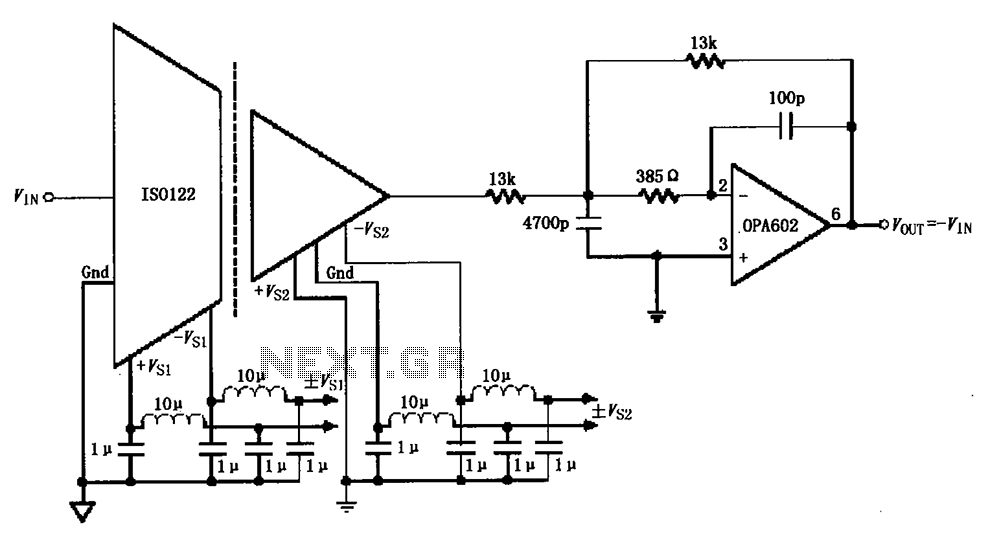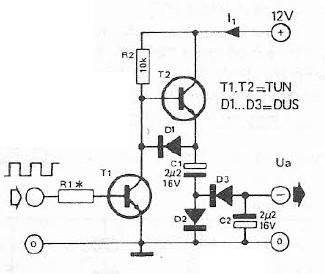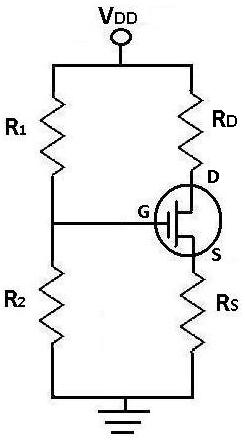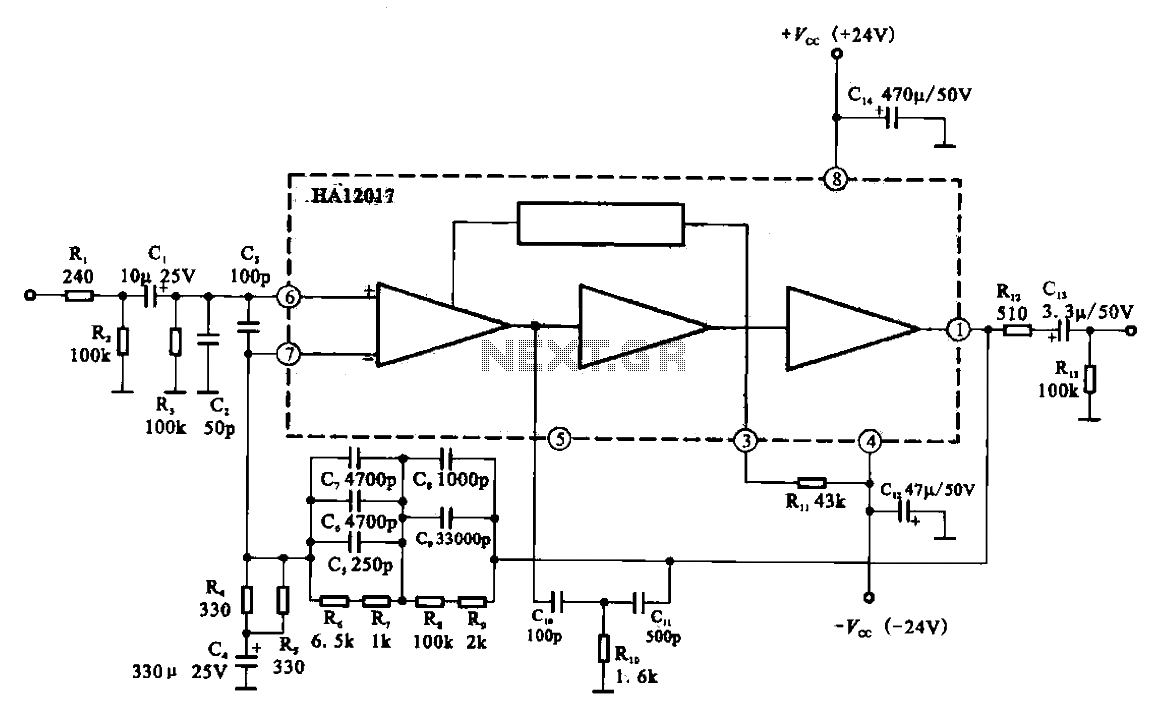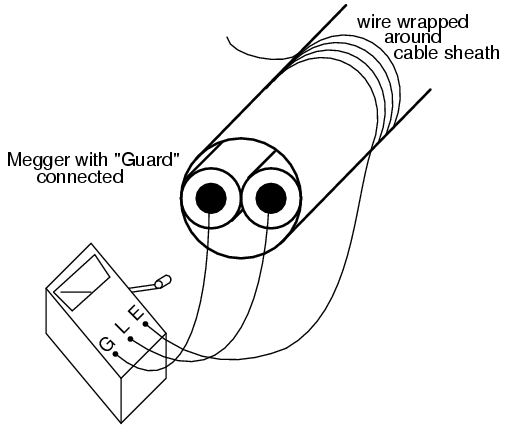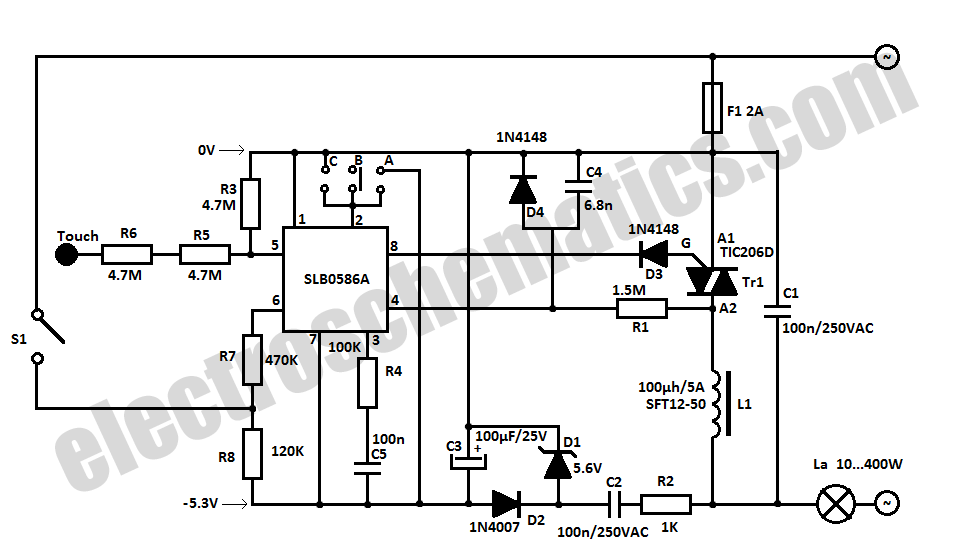
40M Cw Transmitter Circuit
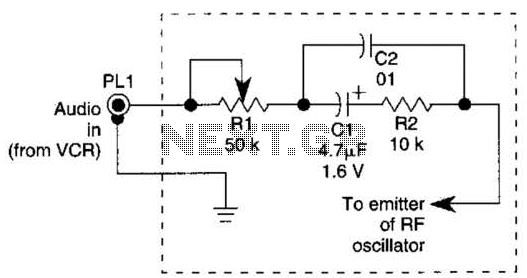
This continuous wave (CW) transmitter is capable of producing an output power of up to 3 watts. By applying a 24-volt supply to transistor Q2, the output power can be increased to as much as 10 watts. It is important to ensure that transistor Q1 does not experience more than 12 volts if a 24-volt supply is utilized. A 12-volt connection should be made between the junctions of capacitor C3, resistor R2, and inductor L2, while inductor L5 should be removed from the circuit. Inductor L1 should be a low-Q inductor with an inductance value ranging from 18 to 20 microhenries. Additionally, resistor R6 can be employed with a maximum resistance of 47 ohms to further decrease the quality factor (Q) of the circuit.
The CW transmitter circuit is designed for efficient operation, providing flexibility in output power levels based on the supply voltage applied. The choice of a low-Q inductor L1 is critical, as it influences the bandwidth and stability of the transmitter. A low-Q inductor minimizes losses and allows for a broader frequency response, which is essential for maintaining signal integrity in communication applications.
Transistor Q1 must be carefully selected to handle the specified voltage levels, ensuring that it operates within safe limits to prevent damage. The design includes a voltage divider configuration that utilizes capacitor C3 and resistor R2 to establish the required 12-volt reference point at the junction, thereby protecting Q1 from excessive voltage.
The removal of inductor L5 is a crucial step in modifying the circuit configuration, as it may impact the overall performance and tuning of the transmitter. By adjusting the values of R6, the designer can fine-tune the quality factor of the circuit to achieve the desired balance between efficiency and output stability. The maximum resistance of 47 ohms provides a practical range for achieving the necessary Q reduction without compromising the transmitter's operational capabilities.
Overall, this CW transmitter circuit offers a robust solution for generating continuous wave signals, with careful consideration given to component selection and configuration to optimize performance and reliability. This CW transmitter has an output of up to 3 W. By using 24 V on Q2, up to 10 W output can be obtained. If a 24-V supply is used, Ql must not see more than 12 V. Connect 12 V between junctions C3, R2 and L2, and remove L5. LI should be a low-Q 18- to 20- inductor. R6 can be used (up to 47 ) to reduce the Q further. 🔗 External reference
The CW transmitter circuit is designed for efficient operation, providing flexibility in output power levels based on the supply voltage applied. The choice of a low-Q inductor L1 is critical, as it influences the bandwidth and stability of the transmitter. A low-Q inductor minimizes losses and allows for a broader frequency response, which is essential for maintaining signal integrity in communication applications.
Transistor Q1 must be carefully selected to handle the specified voltage levels, ensuring that it operates within safe limits to prevent damage. The design includes a voltage divider configuration that utilizes capacitor C3 and resistor R2 to establish the required 12-volt reference point at the junction, thereby protecting Q1 from excessive voltage.
The removal of inductor L5 is a crucial step in modifying the circuit configuration, as it may impact the overall performance and tuning of the transmitter. By adjusting the values of R6, the designer can fine-tune the quality factor of the circuit to achieve the desired balance between efficiency and output stability. The maximum resistance of 47 ohms provides a practical range for achieving the necessary Q reduction without compromising the transmitter's operational capabilities.
Overall, this CW transmitter circuit offers a robust solution for generating continuous wave signals, with careful consideration given to component selection and configuration to optimize performance and reliability. This CW transmitter has an output of up to 3 W. By using 24 V on Q2, up to 10 W output can be obtained. If a 24-V supply is used, Ql must not see more than 12 V. Connect 12 V between junctions C3, R2 and L2, and remove L5. LI should be a low-Q 18- to 20- inductor. R6 can be used (up to 47 ) to reduce the Q further. 🔗 External reference
